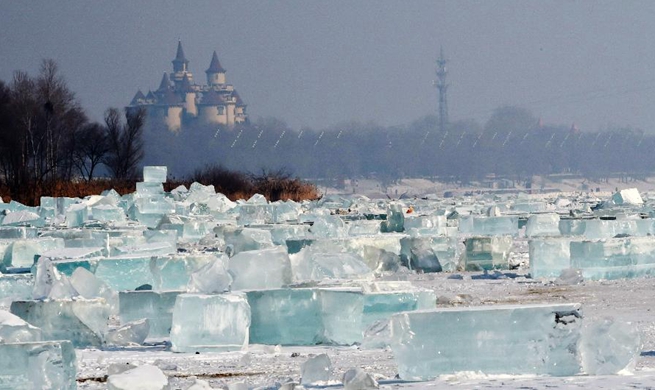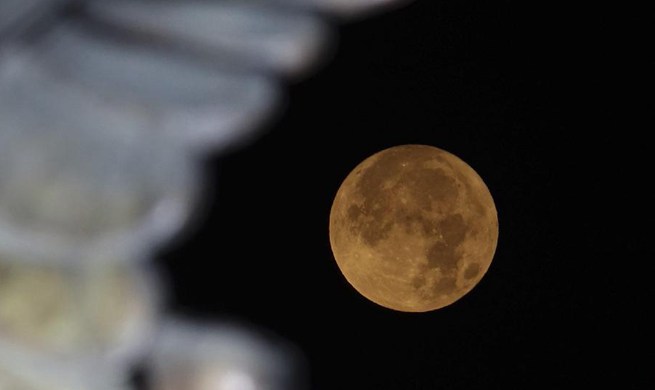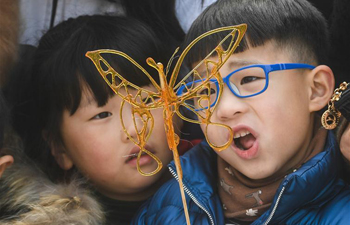XINING, Jan. 2 (Xinhua) -- On Monday, Chuenpen Tashi, a mountain guide, celebrated New Year's Day in Hoh Xil, high in the Tibetan Autonomous Prefecture of Yushu in northwest China's Qinghai Province.
It was Tashi's first New Year in Hoh Xil since it became a World Heritage Site last year. The name Hoh Xil means "beautiful young woman, blue mountain" in Mongolian.
"The past years were just like a dream to me, and the once bloody Hoh Xil has now entered the best of times," said Tashi, 35. "The year 2018 will be a new beginning, and as a warden here, I will try my best to protect the clean soil under my feet."
The area listed by the UNESCO covers some 6 million hectares at an average altitude of over 4,600 meters, making it an ideal habitat for Tibetan antelope.
Years of care have allowed the wild animal populations to grow, but also brought hardships for Tashi's family. In 1994, his uncle was killed by poachers, and four years later, his father died while patrolling the mountain.
Over 70 people work Hoh Xil National Nature Reserve and over 90 percent of them are Tibetan.
In the 1980s, Hoh Xil was plagued by poachers who hunted Tibetan antelopes for their hides, which were made into shahtoosh shawls.
"During the craziest period, poachers drove trucks into Hol Xil, and slaughtered wild animals," said Luo Yanhai, deputy head of the forestry police bureau. "Wild animals were skinned and their bodies discarded everywhere."
At the end of the 20th century, the number of Tibetan antelope in Hoh Xil had decreased from more than 200,000 to less than 20,000.
"In the past, the budget was tight, so when we patrolled, we lived in tents and lit candles," said Tashi. "The tents were often attacked by bears."
During the arduous patrols, the patrollers ate instant noodles and pancakes. Due to the high altitude, they had to use pressure cookers to cook the noodles.
"In winter, we would take high-calorie food like butter, but due to the cold, they froze easily," Tashi recalled.
"Daily patrols are our routine," he said.
The population of the Tibetan antelope has increased and Hoh Xil currently has more than 60,000 antelopes.

















